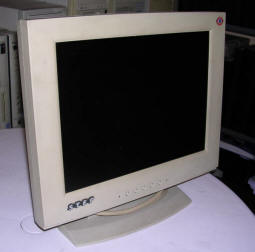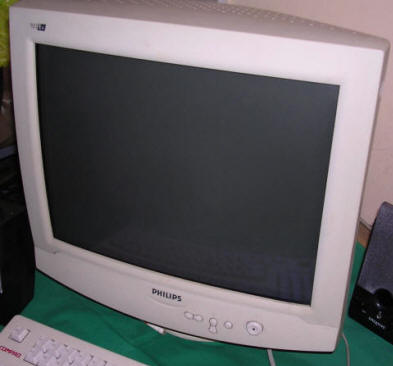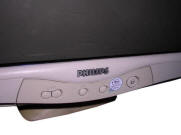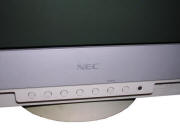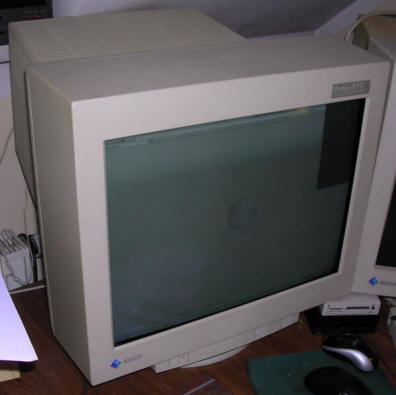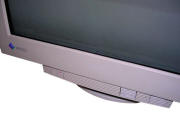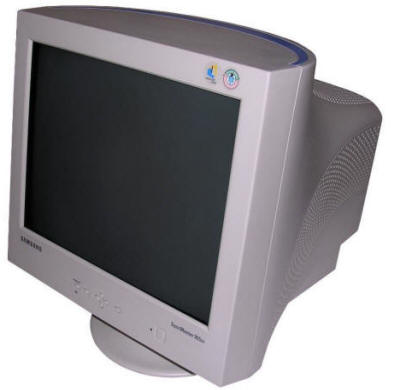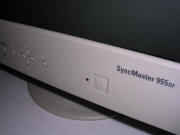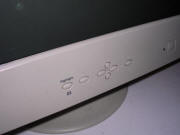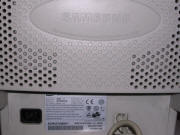Monitors and displays (3)
End of a CRT era
In my collection, different PC displays accumulated over time with
computers, PCs, sometimes as part sources which have been surprisingly
repaired. From simple TV-like displays with green screens, to complex
monitors with digital control circuits. Here is a small travel around
these. Don't forget to look at some PCs, as they also have monitors to
complete a set.
|
The first LCD monitors could be seen in notebook computers in 1990s, but their poor response time, bad contrast and limited colour depth made them insufficient for graphics or even advanced office applications. In 1980s and 90s monitor contained a large vacuum tube which shown, with few tens of Watts expense, usually acceptable picture. Of course CRTs became more and more energy-efficient - starting from switching converters, which could turn the display off when not used to higher efficiency of electron beam and deflection circuits. However, the later displays were made the worse the quality was. Finally, expensive LCD monitors became more affordable and offered better quality - more because CRT became worse than LCD better. Although the first usable LCD displays became available around 1997, their price was comparable to 4-8 CRT displays and quality of picture, especially dark images, was much worse. Many of them required dedicated video board too. |
|
|
The last CRT displays, Samsung, LG or Eizo, were made around
2005. There were good and bad displays in this era. |
|
Generally, what I found about quality: Eizo>Nec>Philips>Iiyama>Sony>Dell>Other. However, every manufacturer has better or worse models. More, if you plan to get Eizo, better reserve much space on the rear of desk because this monitor doesn't get narrow on the rear (more, its rear lifts up).
| Philips 107E4 | ||
| Approx. year: | 2002 | |
| Type, connector: | DB15, VGA, 1280x1024 | |
| CRT: | 17" colour | |
Around 2000 Philips
refreshed their "SoHo" (Small office/Home office) series of
lower-end displays. They had smaller capabilities than
Brilliance series, being made for operation in home or office
systems.
107E was the "base" model with the most basic functions like
OSD, and not much more. The CRT's surface is not flat, which was
a new technology in early 2000s. However, it is Philips, so it
still gives an acceptable picture with good colours.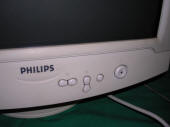
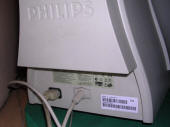 |
||
| Philips Brilliance 107T5 |
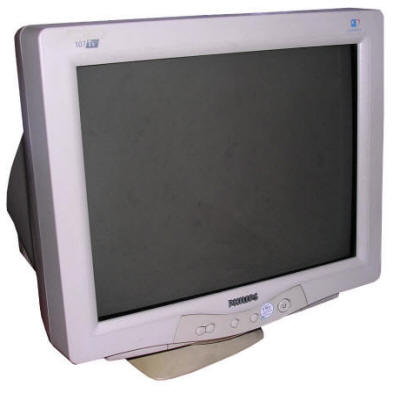 |
|
| Approx. year: | 2003-4 | |
| Type, connector: | DB15, VGA, 1280x1024 | |
| CRT: | 17" colour | |
| With monitors like this one, a whole
CRT era ended, with bulky tubes being replaced by smaller flat
LCD monitors (however, still displaying smaller amount of colors
and incapable to show black). This is one of the more advanced
monitors, it has a few interesting features not commonly found
in other displays. First, its screen surface is totally flat.
Not round, not barrel-like, but flat, which was a new thing in
2000s. Next, its power switch operates in soft mode.
Additionally it has more advanced OSD and a LightFrame mode
which increases brightness of the picture, but not a whole
picture. It was a software-hardware solution, in which by using
some software it was possible to increase parameters only on
specific areas, e.g. with video or picture viewed. The result,
unfortunately working only in Windows 9x, 2000 and XP, is
interesting and indeed works surprisingly well. Unfortunately it
doesn't work for Linux even where there is a
Linux program
for it available - analyzing sources it still draws bitmap for
monitor's controller like Brilliance 105's configuration. The display has been purchased from surplus in quite nice condition and it is still used. Contrary to 21-inch displays these units were not forced to work on maximum parameters of components, so they can outlive many LCDs with poor capacitors. |
||
| Nec Multisync FE2111SB |
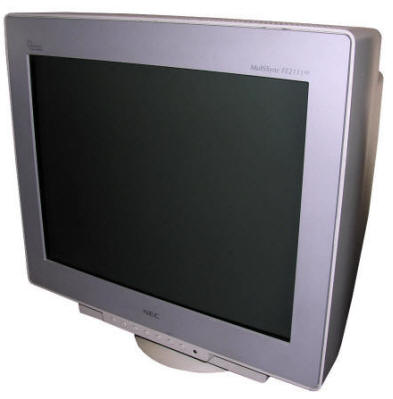 |
|
| Approx. year: | 2004 | |
| Type, connector: | DB15, VGA, 1600x1200 | |
| CRT: | 21" colour, flat-screen | |
| A semi-professional large-screen
display with nice contrast, brightness and sharp picture. It has
only one input, and, unfortunately, quite large margin around
CRT so having two of them won't make a good dual-screen
experience.
Its OSD has quite large intelligence with auto-adjustments, a
few presets and advanced settings. I still use it with Macs. |
||
| Eizo FlexScan F56 |
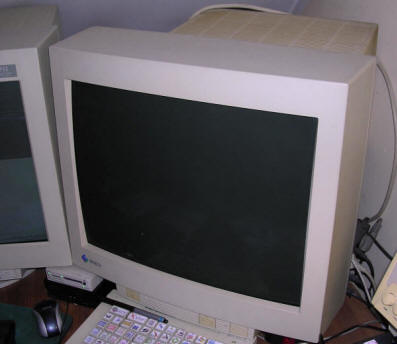 |
|
| Approx. year: | 2000 | |
| Type, connector: | BNC, Sun 13W3, 1600x1200 | |
| CRT: | 21" colour | |
| One of the first professional
monitors which became available in "second-hand" market
simultaneously with its factory distribution - new items were
sold in some places until 2003, although the construction is
from late 1990s. Its screen is not flat, but its picture is nice
and sharp when maintained properly. It has BNC inputs, typical for high-end display units
but also a Sun-compatible input. The downside is that it
needs active cooling so it has a fan. Unfortunately some units may have blocked menu. Then, and to generally tune it properly, a cable with software are needed: http://oldcomputer.info/hacks/eizo/ |
||
| Dell P1130 |
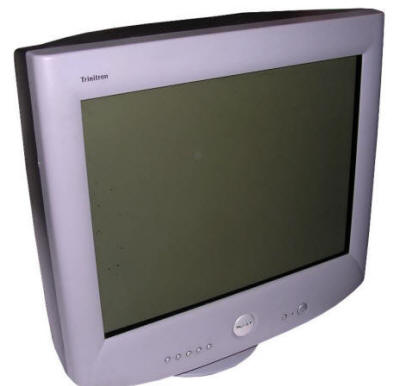 |
|
| Approx. year: | 2004 | |
| Type, connector: | DB15, two-input, 2048x1536 | |
| CRT: | 21" (?) colour, flat-screen | |
One of the last CRTs,
with Sony Trinitron picture tube. These tubes offered a very
good quality, but required complex circuits. This is a Sony
unit, branded as Dell. However, there are some disadvantages. First,
the border around screen is large so having dual-screen is a
problem. Another problem is the CRT, which becomes brighter and brighter with age, so it
needs a re-adjustment. Fortunately the tuning can be done with a
hardware hack. Another problem is the screen size, Trinitrons
had a bit smaller viewable area than other tubes.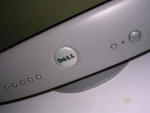
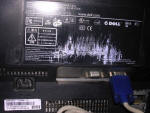 |
||
| Samsung SyncMaster 957MB |
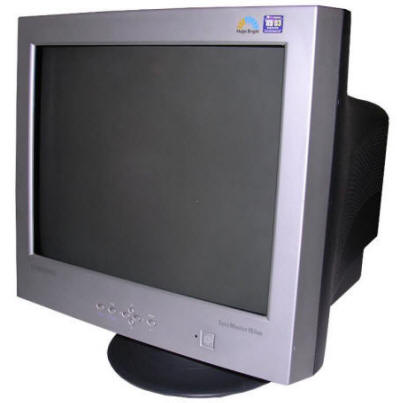 |
|
| Approx. year: | 2003 | |
| Type, connector: | DB15, BNC, 1600x1200 | |
| CRT: | 19" colour, flat-screen | |
| A better model from the
flat-screen line, later it became a standard one. It has a
flat-screen CRT, with relatively nice picture quality. This one has two inputs, VGA and BNC. It also
has a USB port, but not for USB switch, common in displays from
2000s - in this model it is used to tune the display by
software. Although there is even a
Linux software
for it, I haven't managed to get it working. There was a similar 957MB, but without BNC, detachable VGA cable and USB tuning support. However, the last Samsung CRT monitors were the models with buttons on the right side of CRT, they were relatively good. 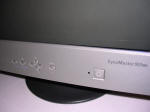
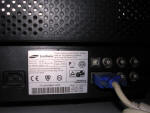 |
||
|
|
Previous part |
Next part |
|





